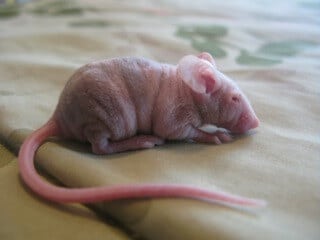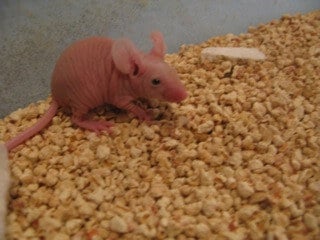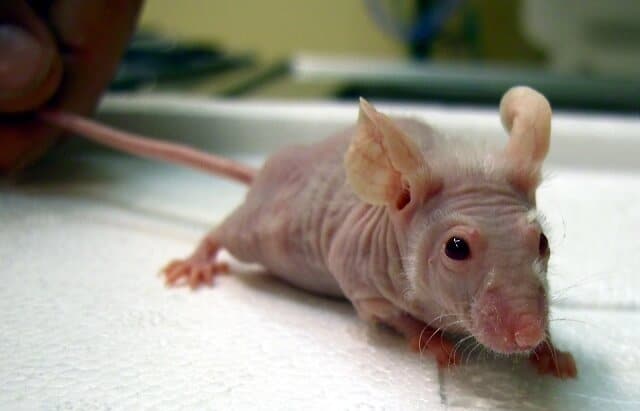The Hairless Mouse
If you have ever seen a Hairless mouse (also known as a nude mouse) it’s an interesting sight. The first thing most people think about mice is how cute and soft they are. Having no fur is startling at first, but this breed of mouse is something a little special if you ask me.
There are different genes that are responsible for a mouse being hairless, these include the rhino, rex, nude, and other completely hairless mice variants. Some hairless mice are completely free of hair, meaning they don’t even have whiskers or eyelashes. While some do have.
Contents
Hairless Rex Breed of Hairless Mouse
Breeders have been selectively breeding rex mice that are hairless for some time. This breed does have whiskers and eyelashes, which separates them from pure furless mice.
They can also be bred to be very fuzzy. As well as bread to be as furless as possible. Breeders found that this method of selective breeding had some advantages other the ‘pure’ hairless mice. They have less inherent health issues and are more sociable.
The pure breeds are also known to be susceptible to developing abscesses. Which is not the case with rexes carefully selectively bred. If you are looking to adopt a hairless rex I recommend doing a lot of due diligence and picking a reputable breeder very carefully.
Hairless Mice Temperament and Behavior
 Bucks are happy to live in groups and coexist if you are providing a large and adequate environment. One school of thought on this is that they like to help keep each other warm. Seeing as they don’t have coats, it can get quite chilly so thinking carefully about where you locate their cages.
Bucks are happy to live in groups and coexist if you are providing a large and adequate environment. One school of thought on this is that they like to help keep each other warm. Seeing as they don’t have coats, it can get quite chilly so thinking carefully about where you locate their cages.
A typical litter will be between 6-12 pups. All the offspring are cared for by the mother, and you should follow the typical guidelines to taking care of the mother and offspring in anyway you can without upsetting the balance.
A littler from hairless mice is really interesting. You can get a wide range of different types of coats. From completely bald, so a little fur, to very fluffy and fuzzy coats. A lot of the result comes down to be selective breeding process.
What a Healthy Hairless Mouse Should Look Like
If you are viewing hairless mice, you should look carefully at the following to ensure they are healthy;
Skin
Should look tight and and bright, There should be no scars, pimples or other discolouring issues. Their skin should be as free from hair as possible.
Eyes
Their eyes can be any color but should look bright and alert. There should not be any fluid around the eyes or lumps, bumps, or anything that doesn’t look clean.
Ears
Their ears should be large and free from wrinkles. Have a little look just inside without poking in there, make sure they are clean and healthy.
Toenails
You should also check their toenails for any damage or infection. You may need to clip their nails occasionally if they get too long.
Hairless Mice Grooming
You do not have to get involved with the grooming of hairless mice. Having no fur actually means they cannot get dirt and debris caught up in their coats. Although mice are very efficient and keeping their coats clean anyway.
You will observe them washing by spreading their saliva on their paws and wiping it over their body. If you have several mice you will see them grooming and washing each other on occasion which is nice to see as it means they are getting along.
Hairless Mice Diet
There is nothing different about their diet that regular pet mice or fancy mice. Nutritional pellets or blocks along with a varied diet of vegetables and fruit will keep them happy and healthy.
Housing Your Hairless Mice
 Because they do not have coats their body temperature will be lower than that of a normal mouse. So think about this when positioning and kitting out their cage.
Because they do not have coats their body temperature will be lower than that of a normal mouse. So think about this when positioning and kitting out their cage.
Don’t position their cage next to drafts like open windows or near doorways. Add plenty of bedding in there and a few places to hide and huddle together as a group.
You will find all the housing information you need here. My advice is always to house them in the largest possible cage or tank, they will be much happier with more room to exercise and explore.

